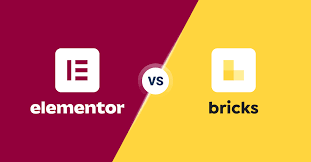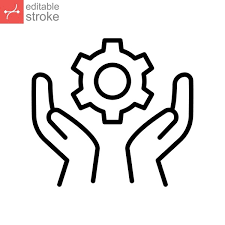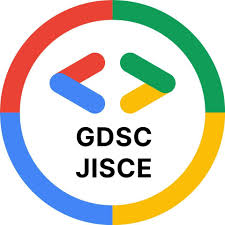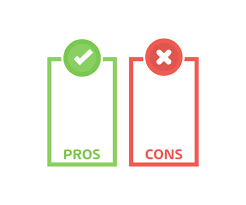In the world of WordPress, page builders are a game-changer — especially for users with no coding background. They allow you to design complex, responsive websites visually using drag-and-drop interfaces.
Elementor has long been the industry leader, but in recent years, Bricks Builder has emerged as a powerful contender. With performance-focused architecture, a modern interface, and developer-friendly features, Bricks is winning hearts fast.
So which builder is right for you?
In this comprehensive guide, we’ll compare Elementor vs Bricks across key criteria:
- User Interface
- Performance
- Design Flexibility
- Features & Widgets
- Theme Building
- Pricing
- Developer Tools
- Ecosystem & Community
- SEO and Accessibility
- Pros and Cons
Let’s dive in!

1. User Interface (UI) and Ease of Use
Elementor:
Elementor’s interface is intuitive, especially for beginners. The left-side panel houses all widgets, while the right shows a live preview. It’s user-friendly and widely documented.
Bricks Builder:
Bricks has a clean and modern interface with more focus on speed and inline editing. Instead of a sidebar, Bricks allows deeper customization directly on the canvas — similar to professional tools like Figma.
Verdict:
- Beginners may prefer Elementor.
- Designers and pros will appreciate Bricks’ inline editing.

2. Performance and Speed
Elementor:
Elementor is powerful but can be bloated. Many users report slower load times, especially when using multiple third-party add-ons. Caching and optimization are necessary.
Bricks Builder:
Bricks is lightweight and blazing fast. Built with performance in mind, it outputs clean HTML and offers features like lazy loading, optimized assets, and no jQuery dependency by default.
Performance Test (Homepage with 5 sections):
- Elementor: 85–90 (Google PageSpeed)
- Bricks: 95–100
Verdict:
Bricks Builder is significantly faster out of the box.

3. Design Capabilities
Elementor:
Offers hundreds of widgets, templates, and block sections. The design flexibility is vast. Animation, global settings, responsive preview — all are available.
Bricks Builder:
Though newer, Bricks offers robust styling controls, CSS variables, and clean class management — preferred by designers who want full control.
Bricks’ native flexbox and grid support also give it a modern edge.
Verdict:
- Elementor has more templates and is easier for beginners.
- Bricks has more precision for advanced designers.

4. Widgets and Elements
Elementor:
Comes with 90+ widgets in the Pro version. Additionally, many third-party add-ons (e.g., Essential Addons, Crocoblock) extend functionality further.
Bricks Builder:
Fewer widgets compared to Elementor, but covers essentials. It’s growing steadily and supports dynamic content natively.
Notable Bricks Features:
- Dynamic data
- Repeater support
- Query loops
- WooCommerce integration
Verdict:
Elementor wins for quantity, Bricks wins for quality and lean performance.

5. Theme Building
Elementor:
One of Elementor Pro’s biggest strengths is its full Theme Builder — allowing custom headers, footers, archive pages, single posts, WooCommerce templates, and more.
Bricks Builder:
Bricks includes native theme-building functionality (no extra cost). It uses conditions, templates, and dynamic fields — very similar to Elementor.
Verdict:
Both offer full theme building, but Bricks includes it natively without requiring a pro upgrade.

6. Pricing and Licensing
Elementor:
- Free version with limited widgets
- Pro starts at $59/year (1 site), $199/year (25 sites)
- Annual subscription
Bricks Builder:
- No free version
- One-time payment: $99 (1,000 websites lifetime!)
- Lifetime deal is unbeatable
Verdict:
Bricks is more cost-effective, especially for agencies and developers.

7. Developer-Friendliness
Elementor:
Good for beginners but less friendly to developers who want cleaner code, custom loops, or full control.
Bricks Builder:
Built with developers in mind:
- Native support for custom loops
- Advanced conditional logic
- Built-in debugging tools
- Uses PHP templating
- Less code bloat
Verdict:
Bricks is more developer-centric and outputs cleaner, semantic code.

8. Ecosystem & Community
Elementor:
Huge user base, thousands of third-party add-ons, and a thriving ecosystem.
Bricks Builder:
Smaller but growing community. Fewer third-party tools — but many users argue fewer are needed because native features are strong.
Verdict:
Elementor has a massive community and resources.
Bricks is rising fast with a more streamlined, quality-focused environment.

9. SEO and Accessibility
Elementor:
Improved over time, but older code and reliance on divs can impact SEO and performance. Accessibility improvements are ongoing.
Bricks Builder:
Focuses on semantic HTML, performance, and accessibility. Allows control over ARIA labels, heading structure, and more.
Verdict:
Bricks leads slightly in SEO and accessibility.

Pros and Cons Summary
Elementor Pros:
- Beginner-friendly UI
- Huge template library
- Large community and add-ons
- Reliable page building features
Elementor Cons:
- Can be slow without optimization
- Requires Pro version for full features
- Heavy reliance on divs and wrappers
Bricks Builder Pros:
- Extremely fast and lightweight
- One-time lifetime pricing
- Native theme building and dynamic content
- More developer control and cleaner code
Bricks Builder Cons:
- Smaller community (as of now)
- Fewer templates and third-party add-ons
- Slight learning curve for absolute beginners

So, Which One Should You Choose?
It depends on your goals, experience level, and budget.
| Use Case | Best Choice |
|---|---|
| Total Beginner | Elementor |
| Need lots of templates & add-ons | Elementor |
| Focus on performance & clean code | Bricks |
| Developer or agency | Bricks |
| Long-term savings | Bricks (Lifetime) |
| Want broad community support | Elementor |
Elementor remains a powerful, widely-used builder. It’s great for beginners and solo creators who want quick results and a vast ecosystem.
But Bricks is the future-facing builder. With clean output, performance-first design, and a lifetime deal — it’s an excellent choice for professionals and serious website creators.
The best part? You can always test both.
- Elementor offers a free version.
- Bricks has a demo you can try before you buy.
In the end, the best builder is the one that fits your workflow, audience, and future goals.

Bonus: Alternatives to Consider
- Oxygen Builder – Great for developers
- Beaver Builder – Stability-focused, long-standing tool
- Breakdance – New contender by Oxygen team
- Divi Builder – Visual builder with uniqu
Would you like me to:
- Add a featured image for this blog?
- Generate a Rank Math-compatible Table of Contents?
- Insert internal or outbound links (e.g., to Elementor, Bricks official sites)?

